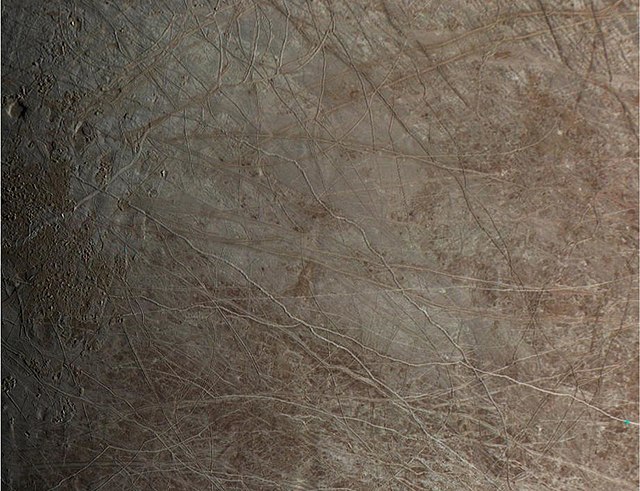Europa, or Jupiter II, is the smallest of the four Galilean moons orbiting Jupiter, and the sixth-closest to the planet of all the 95 known moons of Jupiter. It is also the sixth-largest moon in the Solar System. Europa was discovered independently by Simon Marius and Galileo Galilei and was named after Europa, the Phoenician mother of King Minos of Crete and lover of Zeus.
Size comparison of Europa (lower left) with the Moon (top left) and Earth (right)
Europa closeup (9 September 2022)
NIR image of Europa by the James Webb Space Telescope, confirming the presence of carbon dioxide on the moon
Photo composite of suspected water plumes on Europa
The Galilean moons, or Galilean satellites, are the four largest moons of Jupiter: Io, Europa, Ganymede, and Callisto. They are the most readily visible Solar System objects after the unaided visible Saturn, the dimmest of the classical planets, allowing observation with common binoculars, even under night sky conditions of high light pollution. The invention of the telescope enabled the discovery of the moons in 1610. Through this, they became the first Solar System objects discovered since humans have started tracking the classical planets, and the first objects to be found to orbit any planet beyond Earth.
Montage of Jupiter's four Galilean moons, in a composite image depicting part of Jupiter and their relative sizes (positions are illustrative, not actual). From top to bottom: Io, Europa, Ganymede, Callisto.
Galileo Galilei, the discoverer of the four moons
The Medician stars in the Sidereus Nuncius (the 'starry messenger'), 1610. The moons are drawn in changing positions.
A Jovilabe: an apparatus from the mid-18th century for demonstrating the orbits of Jupiter's satellites








